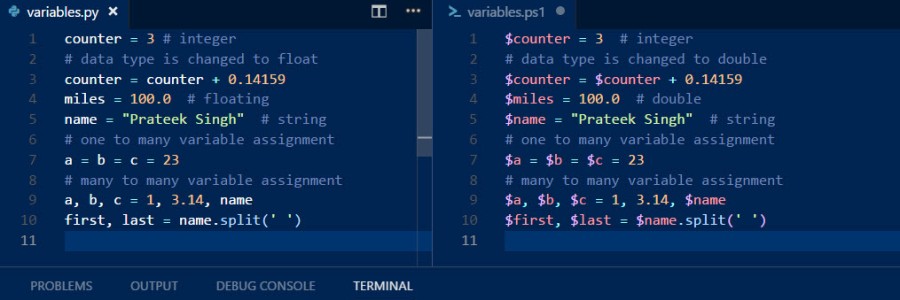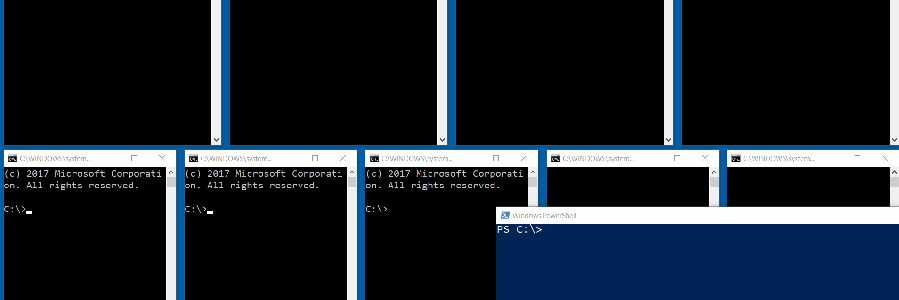I’ve worked on a couple of Powershell automation frameworks, that are always-ON, which is basically a bunch of scripts continuously running on a machine to monitor, test, build or for any other possible use case. One can check the live status of these scripts by logging onto the box and resize-drag-arrange any spawned script or application properly on the screen so that they don’t overlap so that you can read them properly, which I personally found very irritating.
Similarly, when I was testing socket programmed python chat application I wrote, from multiple Telnet clients it was mess to arrange and resize, something like in the below screenshot
but recently, when I started working on one of my bot’s which spawns multiple PowerShell script jobs on my screen , I literally lost my patience while testing and started a parallel side project to set all PowerShell consoles (or any other application) automatically in a grid layout like in the below image.
Thanks to that NO MORE RESIZE-DRAG-ARRANGE! phew!… Read More Set-GridLayout: Arrange apps and scripts in an automatic grid to fit your screen



